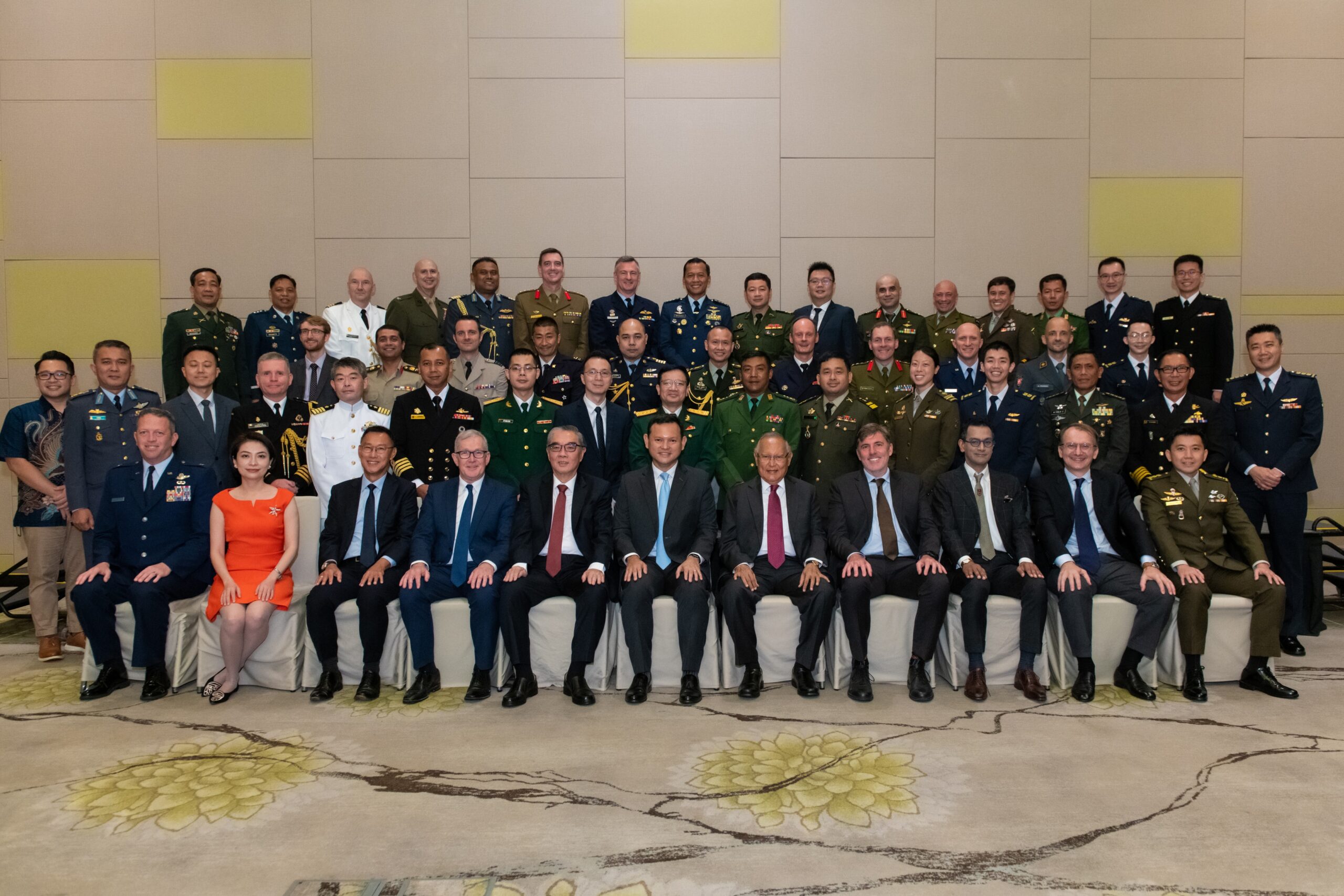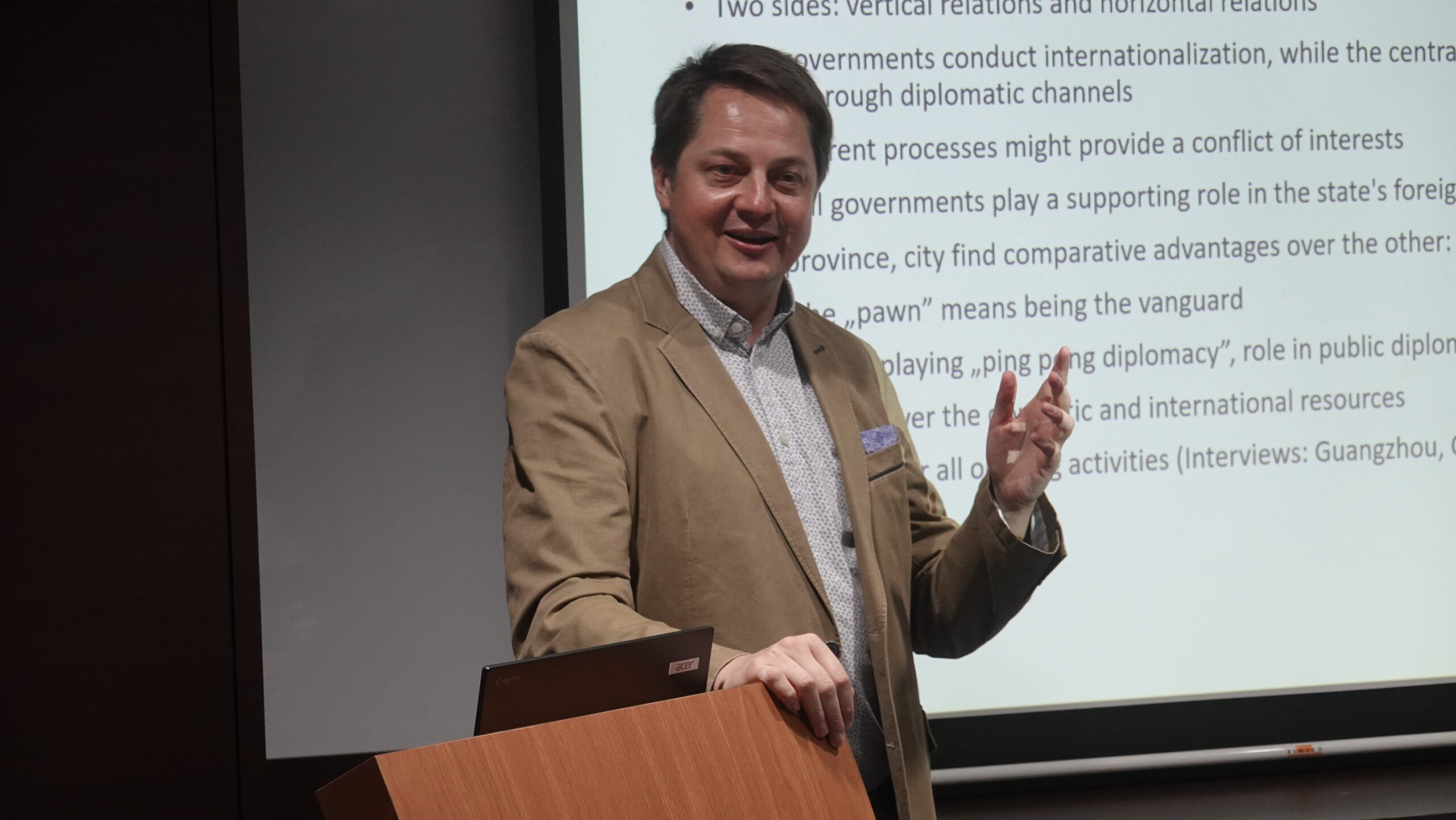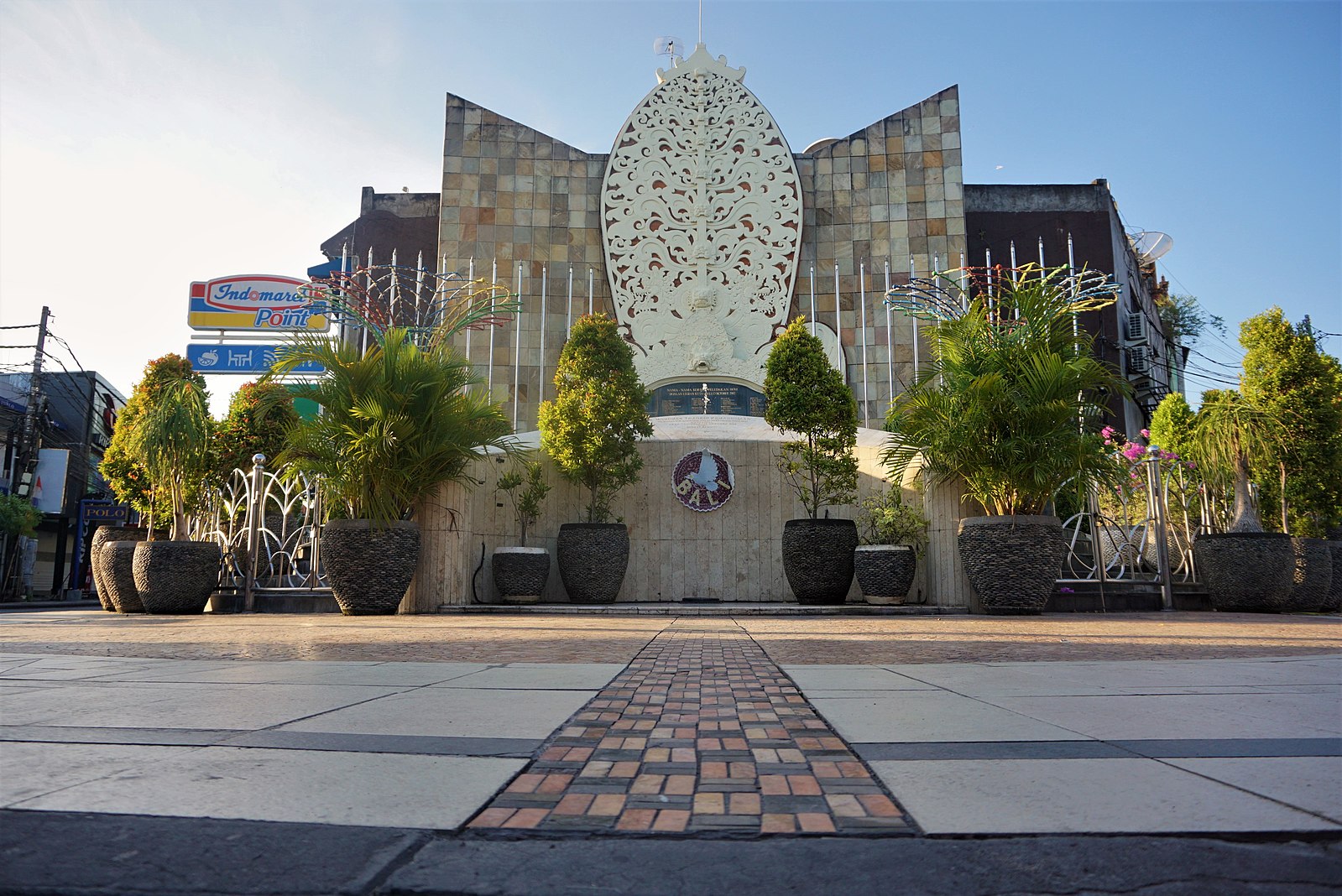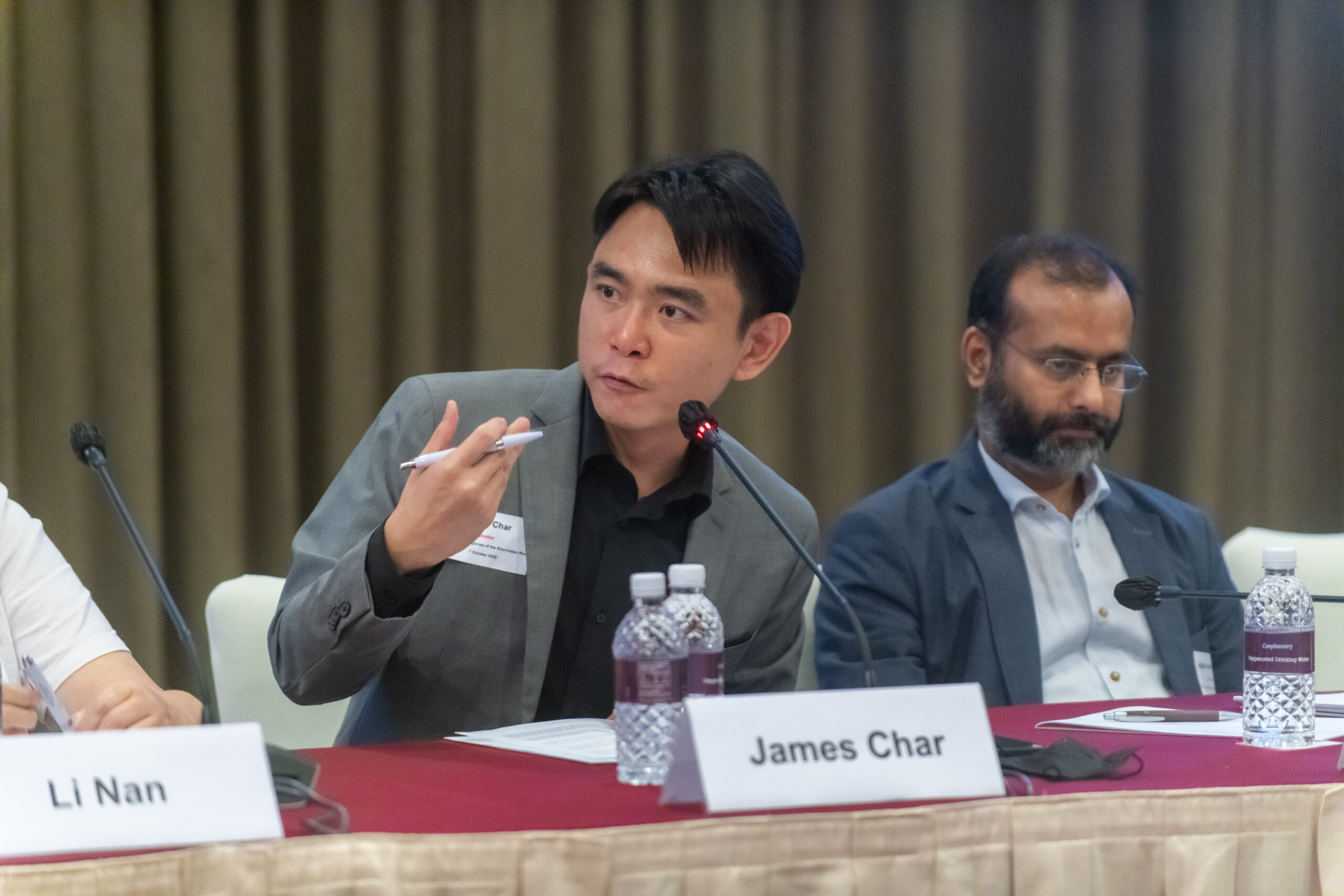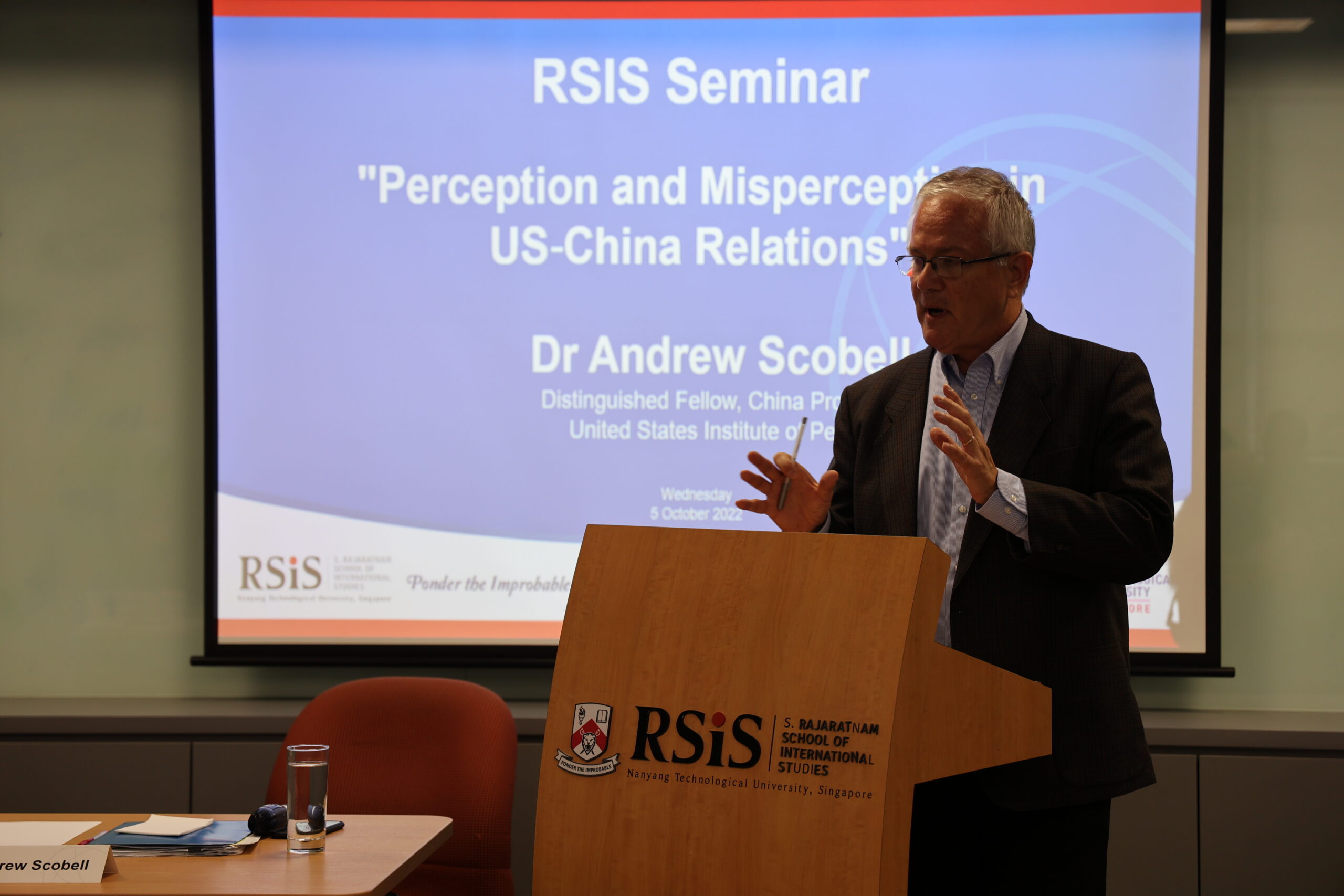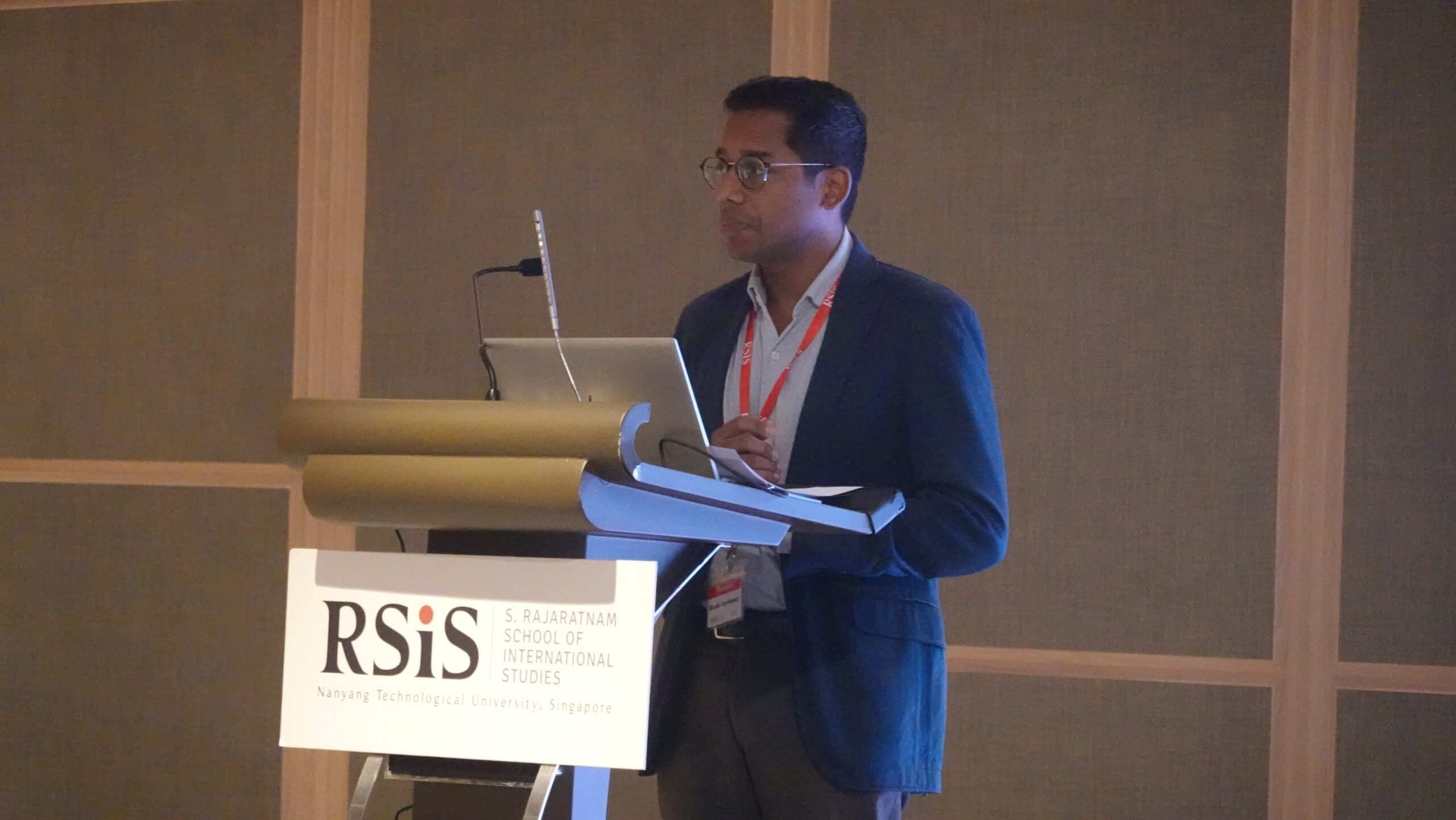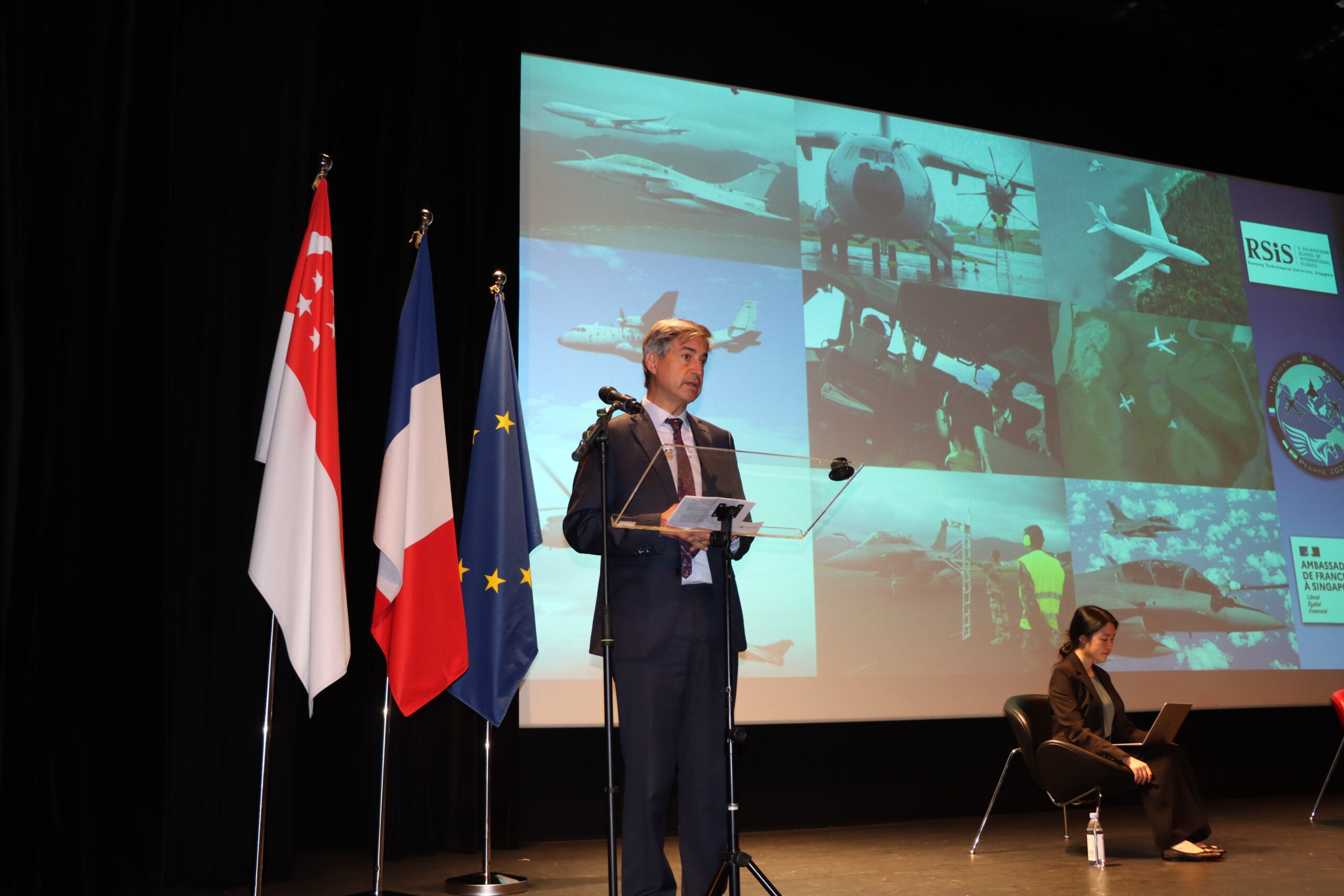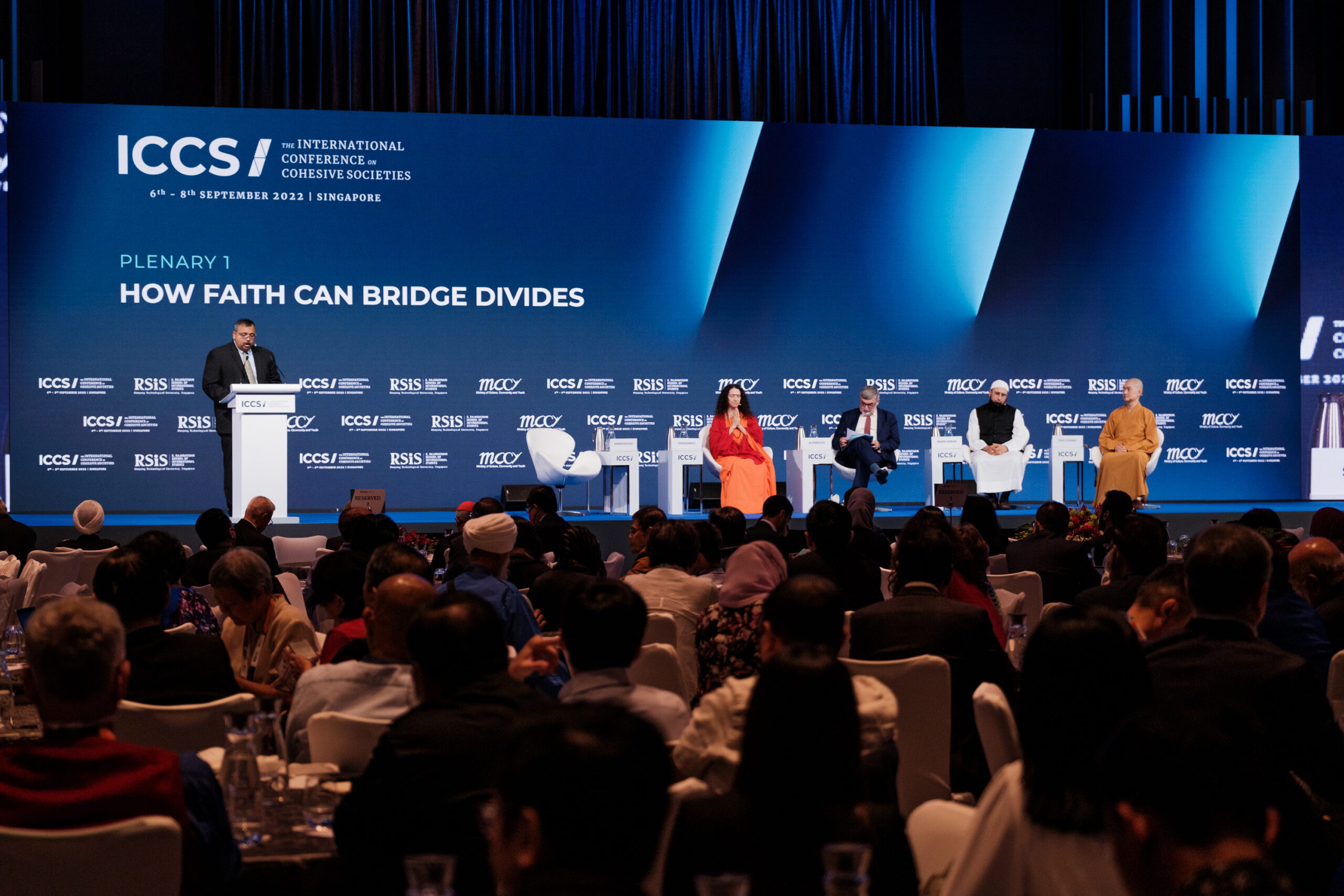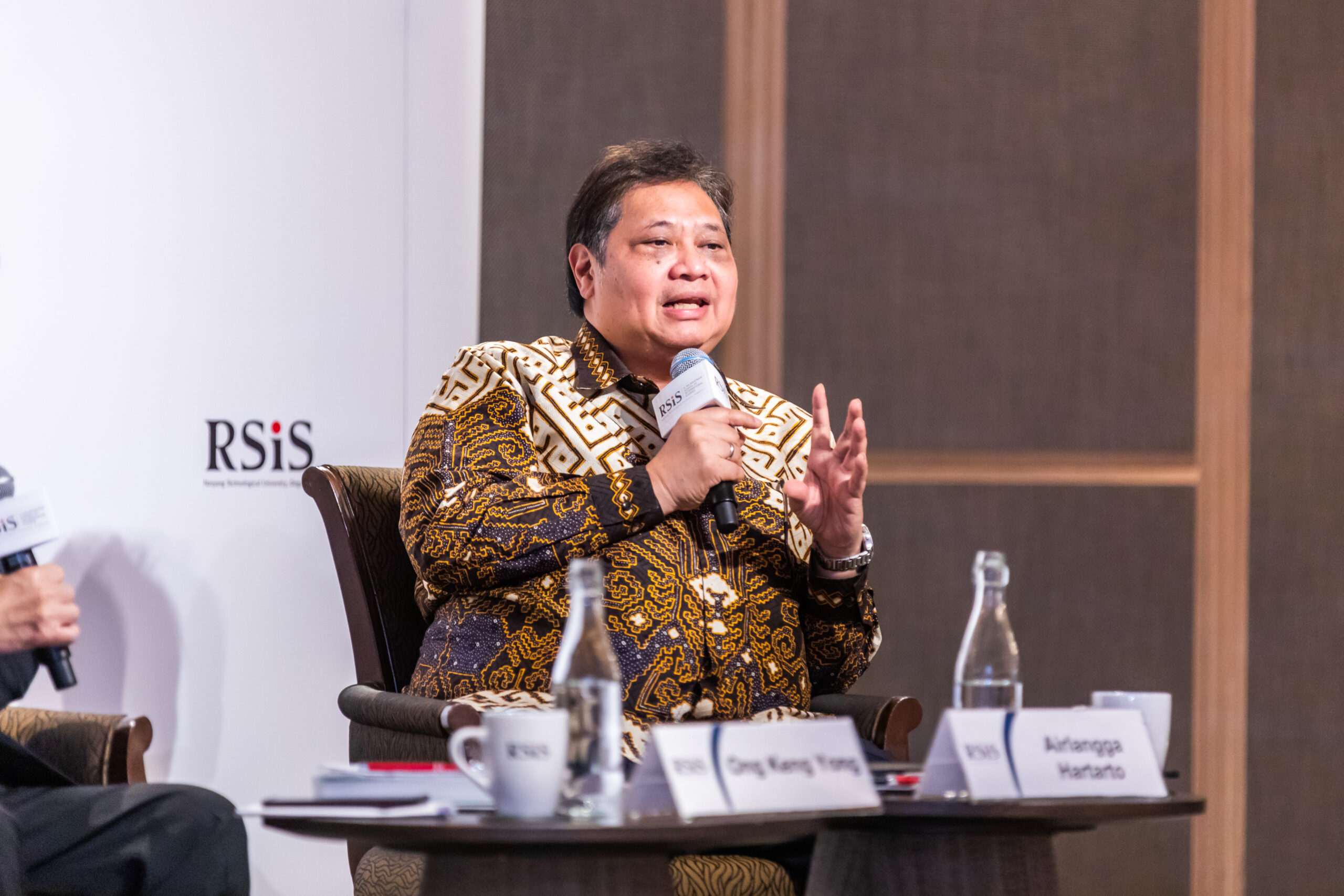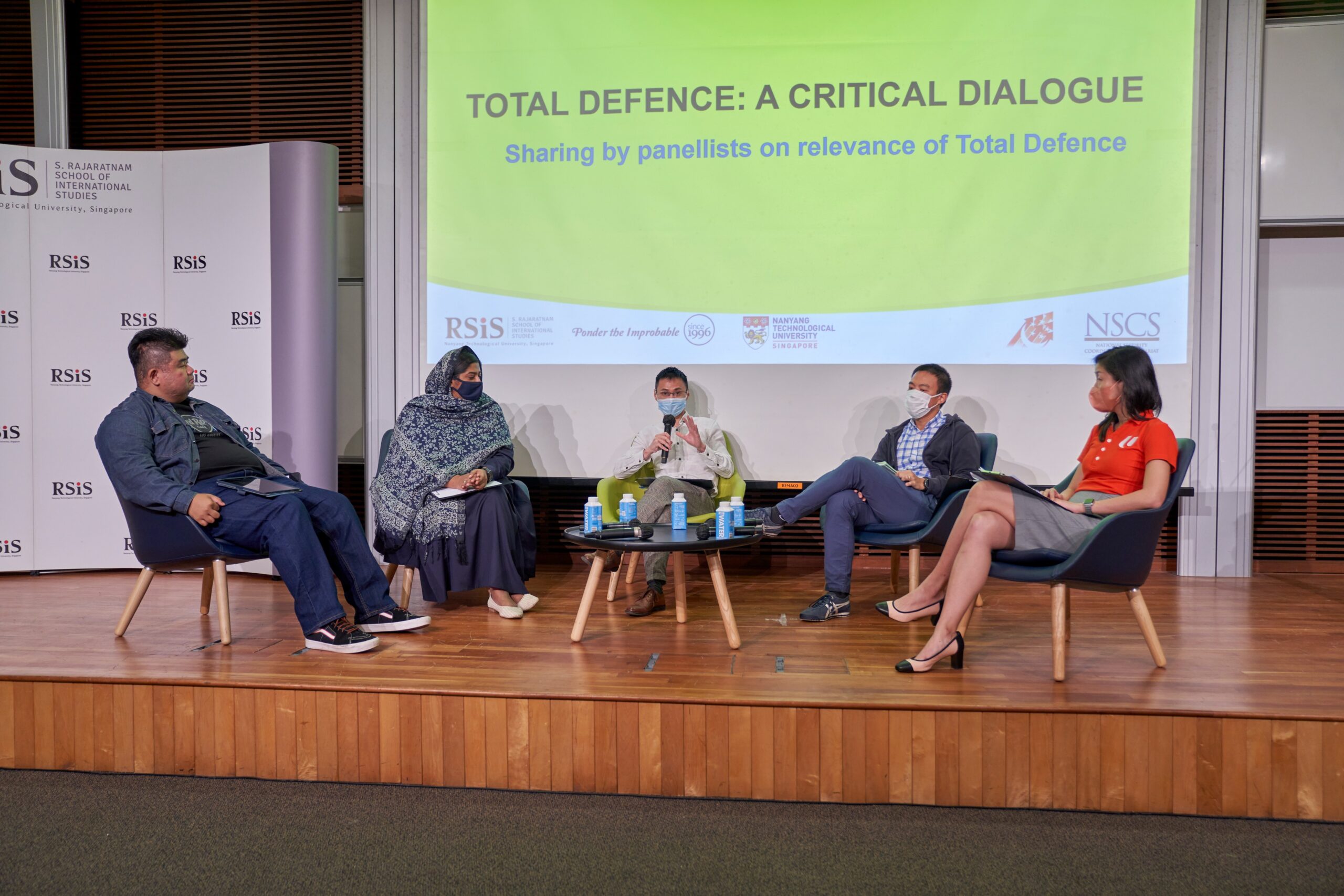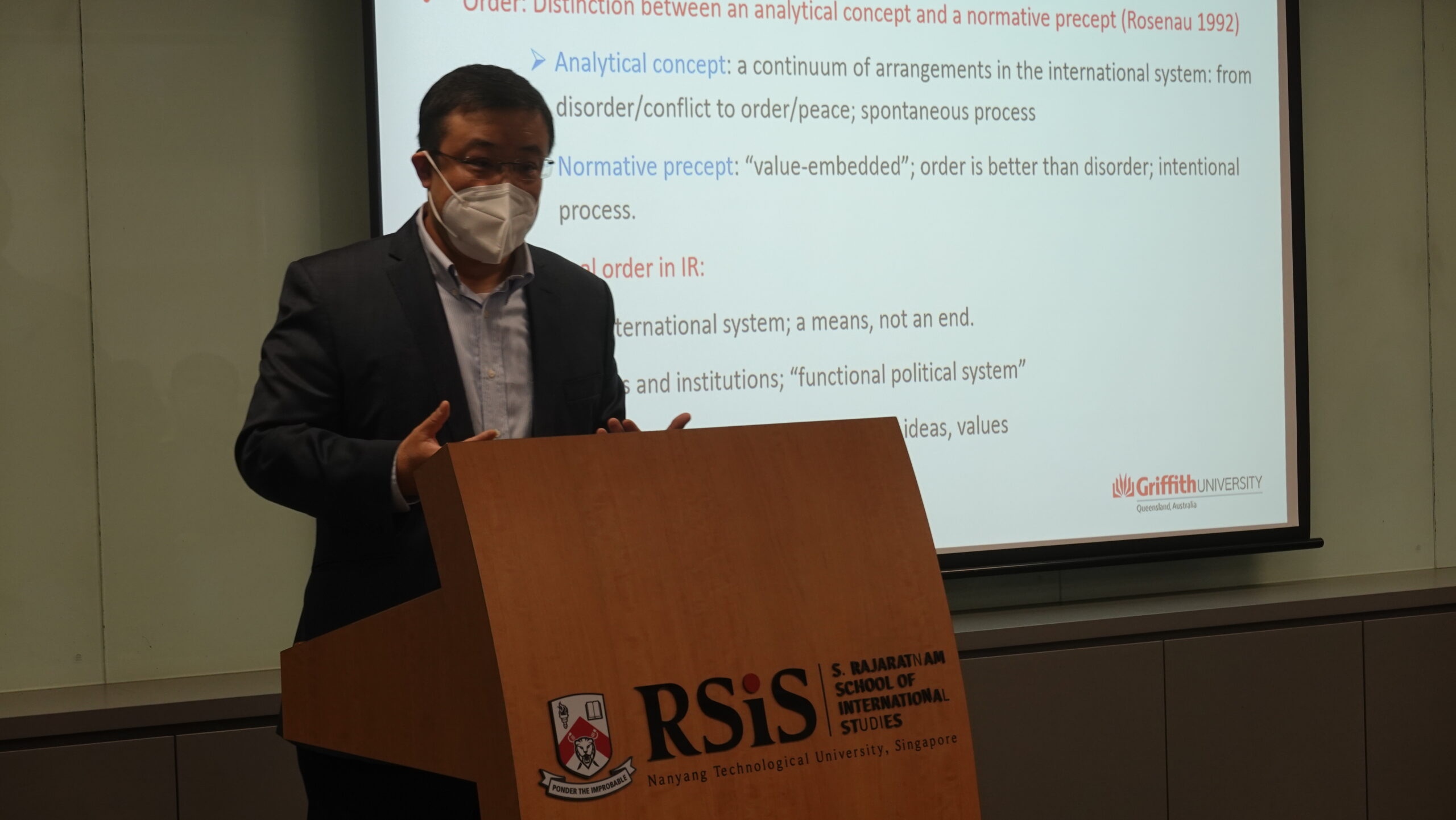
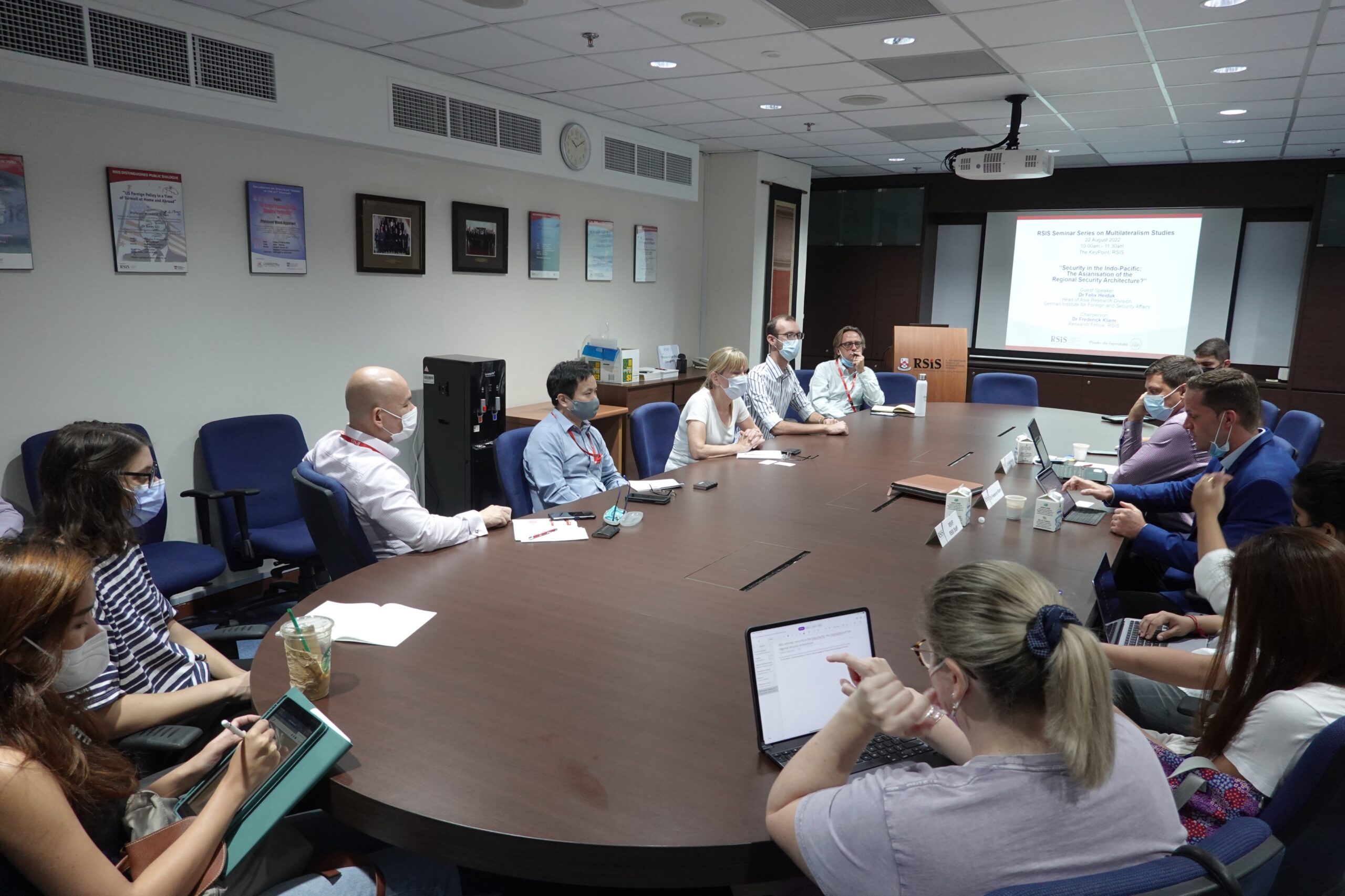
Dr Felix Heiduk, Head of Asia Research Division, German Institute for Foreign Security Affairs, delivered a talk on “Security in the Indo-Pacific: The Asianisation of the Regional Security Architecture?” at an RSIS Seminar held on 22 August 2022. Dr Heiduk noted that the regional security architecture in Asia has been underpinned by the US-led hub-and-spoke system of bilateral alliances since the 1950s. While ASEAN-led multilateral security forums began to flourish in the 1990s, they complemented rather than challenged the prevailing system. However, Dr Heiduk shared that China has begun to openly challenge the future of the hub-and-spoke system by calling for a regional security architecture “by and for Asians”. In response, Washington has launched the Free and Open Indo-Pacific as a concept widely seen as a counter-strategy to a Chinese-dominated reorganisation of the region and its security architecture.
Dr Heiduk examined the nature of the emerging security architecture in the Indo-Pacific by identifying four key regional actors: (i) US as the region’s central security actor; (ii) Australia as a US ally in the region; (iii) India as an emerging regional power with corresponding leadership claims but traditionally focused on the Indian sub-continent; and (iv) Indonesia as an important actor within ASEAN.
He highlighted that the prevailing understanding of how regional security in the Indo-Pacific should be maintained differs among the actors. Washington and Canberra hold an antagonistic view that regional security in the Indo-Pacific must be defended against a revisionist China. New Delhi shares the threat perception of increasingly assertive Chinese foreign and security policies, but also views growing strategic instability in the region as a direct result of increased relative US weakness. Jakarta perceives regional security to be threatened by the US-China rivalry, instead espousing inclusive multilateral security mechanisms rather than antagonistic ones directed against China.
Dr Heiduk concluded by saying that the emerging Indo-Pacific security architecture will not be a simple hub-and-spoke 2.0, but will be accompanied by strengthening the role of the spokes and like-minded partners below the threshold of formal US alliances. These changes are characteristics of a security order in transition.



